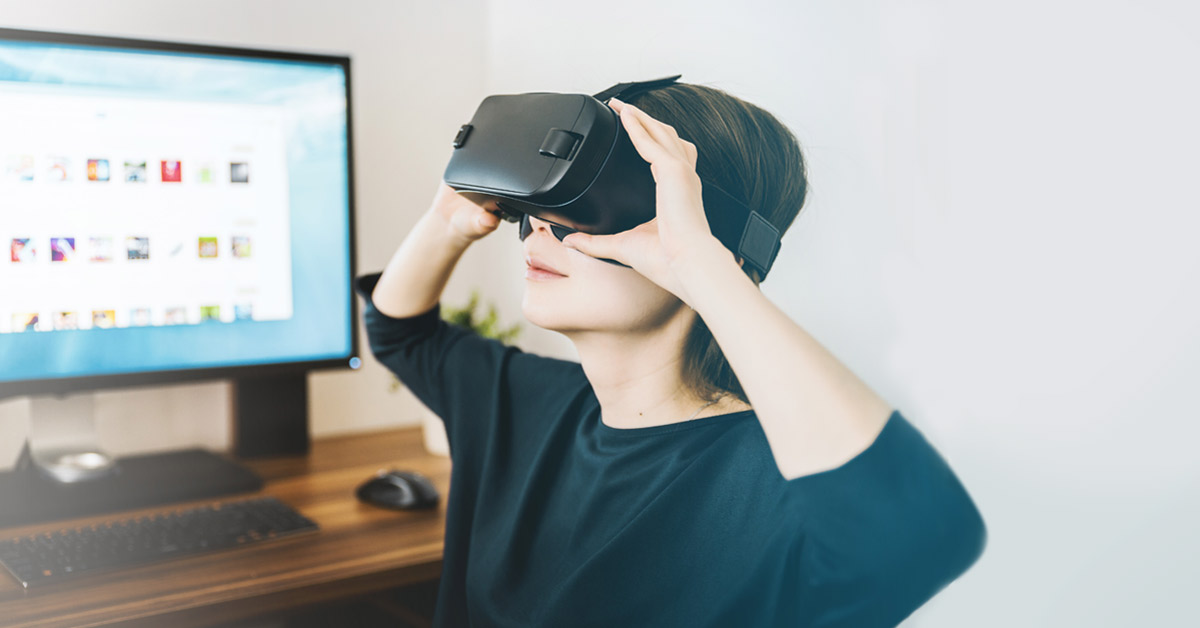
Virtual reality, a marketing tool with a thousand potentials
23 July 2019Virtual reality allows the physical reality of spaces and objects to be reconstructed at high levels of realism and translated into a usable digital representation, using a mask that acts as a viewer without the constraint of being physically in front of objects or within the spaces represented.
There is a growing interest in virtual reality both on the part of companies and in the field of marketing. Indeed, new products have been launched – such as Oculus Rift and Samsung VR – and the introduction of innovative point-of-sale navigation methods: IKEA launched an innovative point-of-sale format in 2016, based on the reconstruction in virtual reality of their traditional physical stores.
The hardware market for virtual reality is estimated at around 6 billion dollars by 2020, which rises to 30 billion for the software part. This growing interest in virtual reality is also reflected in the opportunities offered to businesses.
Thanks to virtual reality, in fact, companies have the opportunity to give the customer a particularly immersive experience, able to simulate the actual interaction with the product and the sales context. Multiple application examples: from advanced tourist tours (such as the Expo 2015 Virtual Tour) to virtual real estate visits, passing through the automotive sector, where virtual reality is used to provide the customer with an extremely vivid and realistic simulation of the interior and of the driving experience of the vehicle.
In the distribution sector, virtual reality is part of an increasing experience, on the one hand, of a typically static purchase channel of e-commerce sites and, on the other hand, offering the possibility also to “physical” sales points of be visited virtually by customers, experiencing them as if they were physically in the store.
In this regard, a study recently published in the international journal Computers in Human Behavior by a team of Italian teachers (Pizzi and Scarpi of the University of Bologna, Pichierri of the University of Salento and Vannucci of the University of Florence) and sponsored by the Società Italiana Marketing (SIM) has shown how virtual reality represents a useful tool to favor the convergence between physical channels and virtual channels.
Within this study a point of sale of one of the main Italian retail chains was reconstructed and the behavior of consumers in the physical sales point was compared with that shown in its virtual counterpart. In both contexts, consumers were interviewed about their satisfaction with the point of sale, the assortment of the store’s atmosphere, while also observing the time spent at the point of sale and the amount of products purchased. In addition, in the virtual context, the entire decision-making process of the customer was monitored using an eye tracking device installed in the viewers.
The results that emerged from the comparison between the two contexts revealed a high overlap between the perceptions of customers subjected to the virtual purchasing experience and those physically exposed to the same shelf both in terms of overall satisfaction and with regard to the assortment and atmosphere. It follows that virtual distributors can be a valid test tool for distributors, allowing them to estimate some variables of strategic importance with good accuracy and providing information that is difficult to measure in an offline environment (visual fixation patterns, time spent in the various sections of the point sale).
The absence found in the study of significant differences between the physical and the virtual channel regarding the products purchased by consumers suggests that virtual reality is able to reliably reconstruct the behavior of customers within the physical point of sale, thus proposing itself not only as a valid analysis tool, but also as a potentially interesting sales channel for companies.
In this context it is necessary to acquire more and more techniques and tools to plan and manage the marketing and sales area of a company. Bologna Business School through the Master in Marketing Management offers a systemic vision of the company that translates into the ability to analyze, build and communicate the value of its product to the market. The Master is designed to help students generate more value for the customer and make it an engine of growth on an international scale.
Author: Gabriele Pizzi, Associate Professor of Marketing
